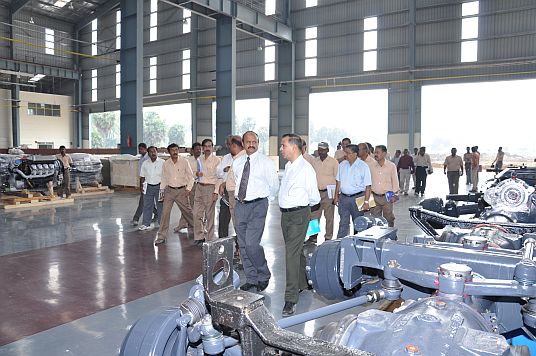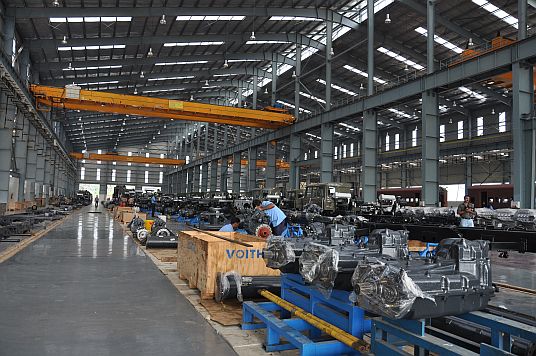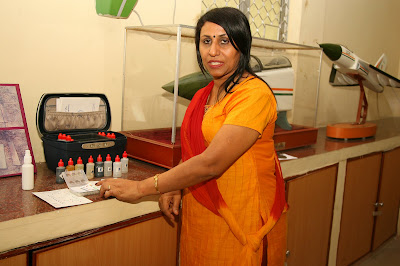- Joined
- Jun 29, 2009
- Messages
- 4,970
- Likes
- 229
http://www.dnaindia.com/bangalore/report_bangalore-metro-coaches-will-come-from-palakkad_1478256
Bangalore metro coaches will come from Palakkad
Bharat Earth Movers Limited (BEML), the country's first rail coach manufacturing company, will provide the Bangalore Metro Rail Corporation Limited (BMRCL) some of its coaches. The first set of 134 coaches for the first phase of the project will cost Rs1,672 crore.
"The BEML has already started manufacturing the first order of 134 cars for BMRCL. We should be ready to deliver them by March, 2011," said P Dwarkanath, director (rail and metro), BEML.
Coaches for the second phase of the Bangalore metro will be provided by the unit of BEML located in Palakkad, Kerala. The Palakkad unit of BEML produces metro coaches, stainless steel EMU coaches, overhead inspection cars, utility vehicles, AC/DC electrical multiple units, broad-gauge rail bus and spoil disposal units for trains and coaches.
The Palakkad unit, which was only inaugurated on May 16 this year, will take care of the bulk of defence manufacturing that the BEML takes up. All-terrain vehicles used by the Indian army will be manufactured at Palakkad after March 2011. The pontoon mainstream bridges used by the Indian Army will also come out of the Palakkad unit.
BEML, through MoUs with the government of Kerala, has acquired 350 acres in Palakkad; 650 more acres are expected to be acquired. "Within five-and-a-half months of the inauguration of the Palakkad unit, we have set up two hanger units and manufactured 122 all-terrain vehicles. Work is sometimes done in three shifts," said chairman of BEML, VRS Natarajan, adding that 70% of defence products will shift to Palakkad.
BEML has seen a turnover of Rs100 crore from the Palakkad unit already. Strategic management planning is being doneby IIM Bangalore.
BEML's Mysore unit is set to be the hub of aerospace manufacturing, producing ground handling equipment, and components for aerospace applications. An exclusive aerospace manufacturing unit is also planned in the Devanahalli SEZ.
Asked about the human resources for Palakkad, BEML officials said nothing firm has been decided yet. It is likely that a few officers might be shifted to Palakkad from Karnataka, 90% of the labour force is expected to be recruited locally. BEML also clarified that none of its staff will be retrenched.
Bangalore metro coaches will come from Palakkad
Bharat Earth Movers Limited (BEML), the country's first rail coach manufacturing company, will provide the Bangalore Metro Rail Corporation Limited (BMRCL) some of its coaches. The first set of 134 coaches for the first phase of the project will cost Rs1,672 crore.
"The BEML has already started manufacturing the first order of 134 cars for BMRCL. We should be ready to deliver them by March, 2011," said P Dwarkanath, director (rail and metro), BEML.
Coaches for the second phase of the Bangalore metro will be provided by the unit of BEML located in Palakkad, Kerala. The Palakkad unit of BEML produces metro coaches, stainless steel EMU coaches, overhead inspection cars, utility vehicles, AC/DC electrical multiple units, broad-gauge rail bus and spoil disposal units for trains and coaches.
The Palakkad unit, which was only inaugurated on May 16 this year, will take care of the bulk of defence manufacturing that the BEML takes up. All-terrain vehicles used by the Indian army will be manufactured at Palakkad after March 2011. The pontoon mainstream bridges used by the Indian Army will also come out of the Palakkad unit.
BEML, through MoUs with the government of Kerala, has acquired 350 acres in Palakkad; 650 more acres are expected to be acquired. "Within five-and-a-half months of the inauguration of the Palakkad unit, we have set up two hanger units and manufactured 122 all-terrain vehicles. Work is sometimes done in three shifts," said chairman of BEML, VRS Natarajan, adding that 70% of defence products will shift to Palakkad.
BEML has seen a turnover of Rs100 crore from the Palakkad unit already. Strategic management planning is being doneby IIM Bangalore.
BEML's Mysore unit is set to be the hub of aerospace manufacturing, producing ground handling equipment, and components for aerospace applications. An exclusive aerospace manufacturing unit is also planned in the Devanahalli SEZ.
Asked about the human resources for Palakkad, BEML officials said nothing firm has been decided yet. It is likely that a few officers might be shifted to Palakkad from Karnataka, 90% of the labour force is expected to be recruited locally. BEML also clarified that none of its staff will be retrenched.
















